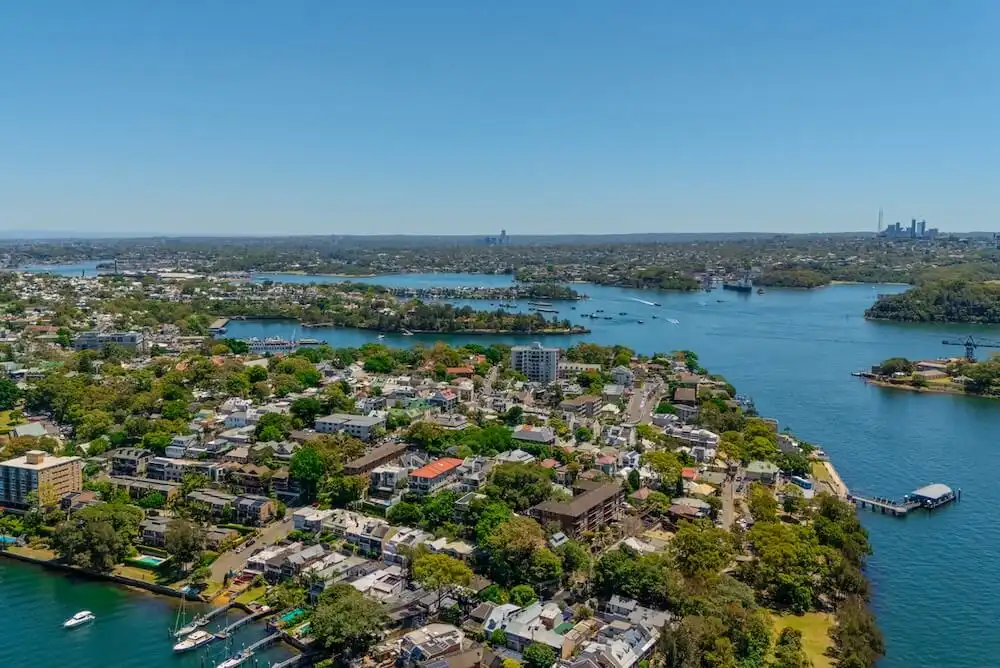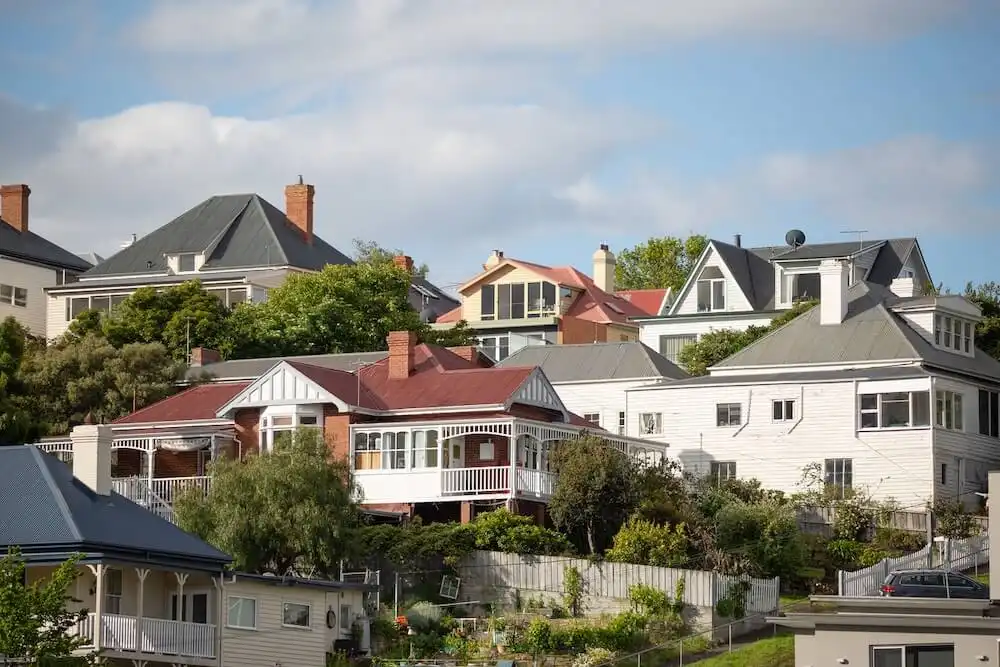Price growth hits its fastest pace in two years
This year's spring selling season has seen Australian property markets accelerate considerably, with October bringing the highest rate of monthly growth since June 2023.
An ongoing shortage of listings, rising demand, and the continued impacts of interest rate cuts are all driving prices higher as the new year approaches.
Get the full picture in this month's market update.

Get a free property value estimate
Find out how much your property is worth in today’s market.
Australian property prices: October 2025
The national median property price rose by another +1.1 per cent over the second month of spring, lifting to a record high of $872,538 according to Cotality's latest report.
That brings total gains since the first interest rate cut in February up to +5.8 per cent.
| Market | Month | Quarter | Annual | Median value |
|---|---|---|---|---|
| Sydney | 0.7% | 2.3% | 4.0% | $1,256,156 |
| Melbourne | 0.9% | 1.6% | 3.3% | $818,975 |
| Brisbane | 1.8% | 4.9% | 10.8% | $992,864 |
| Adelaide | 1.4% | 3.2% | 6.7% | $867,681 |
| Perth | 1.9% | 5.4% | 9.4% | $884,471 |
| Hobart | 0.3% | 0.5% | 2.4% | $686,262 |
| Darwin | 1.6% | 5.4% | 15.4% | $564,473 |
| Canberra | 0.6% | 1.7% | 3.2% | $877,937 |
| Combined capitals | 1.1% | 2.9% | 5.6% | $959,526 |
| Combined regional | 1.0% | 2.4% | 7.5% | $710,573 |
| Australia | 1.1% | 2.8% | 6.1% | $872,538 |
Sydney enjoyed another strong +0.7 per cent uptick, while Melbourne had a particularly lively month, gaining +0.9 per cent.
The three mid-sized capitals of Brisbane, Adelaide and Perth returned to previous outstanding heights, with Brisbane and Perth getting close to a full +2.0 per cent growth over the month.
Darwin's boom continued with gains of +1.6 per cent, with Canberra and Hobart showing more modest but confident signs of a rebound.
Regional markets had a solid month too, gaining a combined +1.0 per cent in October.
"Before the February rate cut, housing conditions were losing momentum, even recording flat to falling values through late 2024 and January 2025," Cotality's Tim Lawless recalled.
"The first rate cut in February marked a clear turning point, with home values moving through a positive inflection across most regions and gathering steam since then."
Three key takeaways from the current market
A number of 2025 property trends have become more firmly entrenched, while other shifts are now just emerging. Here are the headline issues worth tracking.
The supply and demand imbalance is driving accelerated growth
As Cotality's report put it, "there are many factors contributing to stronger housing conditions, but ultimately the uptick in growth is reflective of supply falling well short of demand."
Home sale volumes around the country were +3.1 per cent above the five-year average over the past quarter, suggesting a strong and growing buyer base.
Over the same period, advertised supply levels were down -18 per cent on average, highlighting a widespread shortage of available listings.
The clear mismatch between the number of buyers and sellers in the market has driven significantly higher competition, a dynamic that's also reflected in higher-than-average auction clearance rates.
Investors and first home buyers are the two key buyer groups that have injected extra demand into the market at a time when there simply isn't enough stock to go around.
The entry-level end of the market is seeing the highest gains
Cotality separates the market into four 'quartiles' that segment properties into trackable price brackets.
“The upper quartile of the market is showing the lowest rate of growth across almost every capital city,” Mr Lawless explained.
“Stronger housing demand at the lower price points is likely a culmination of serviceability constraints eroding purchasing power, persistently higher than average levels of investor activity, and what is likely a pickup in first home buyers taking advantage of the expanded deposit guarantee.”
Changes to the federal government's Home Guarantee Scheme, which came into effect on October 1st, have seen a rush of first home buyer demand over the past month, all competing at that lower end of the market.
Sellers with what would be considered more entry-level priced properties are likely to be seeing greater interest as a direct result of the scheme changes.
"Across the combined capitals, dwelling values were up 1.4 per cent across the middle market and rose 1.2 per cent across the lower quartile, while upper quartile values were 0.7 per cent higher through the month," Cotality's report read.
Rental growth hit a 17-month high in October
The rental market has remained uncomfortably tight through spring, with national vacancy rates still hovering around record lows at 1.4 per cent.
Rents rose another +0.5 per cent in October, the largest jump since May 2024.
In most cities, that drive was led by units, which have seen rents hike up by +4.4 per cent over the past year compared to +3.9 per cent for houses.
In the case of houses, that increase is surpassed by annual house price growth, shrinking gross rental yields for investors to 3.4 per cent across the capital cities — the lowest since October 2022.
Darwin, which has seen runaway price growth in 2025, is also topping the list for rental growth, stimulating more investor activity.
“With Darwin leading the rate of value growth over the past 12 months, as well as demonstrating the highest gross yields, the total return is far higher than any other capital at a very strong 23.1 per cent,” said Mr Lawless.
“ABS data shows investment housing loans secured have more than doubled over the past financial year across the NT, helping to explain the very strong market conditions.”
What's next for Australian property?
The spring selling charge looks set to continue as listing supply fails to keep pace with mounting buyer demand.
Cotality says it's a trend that will take some time to rebalance, particularly since new housing supply in the construction pipeline is well below the decade average.
With the latest inflation data providing an unwelcome surprise, though, economists from the big banks are no longer forecasting any further interest rate cuts to come in 2025 — and, in the case of CBA, they say we won't be getting any in 2026, either.
“With interest rates potentially at or near the end of their cutting cycle, we aren’t likely to see a material boost to borrowing capacity from here,” Mr Lawless explained.
Poor affordability is another persistent theme that is expected to keep a lid on runaway growth in 2026, particularly if inflation continues to notch upwards and cost-of-living pressures come back into focus.
With several key moving parts pulling the market in different directions, it's unclear at this stage how much further price growth 2026 could bring.
In the short term, the chasm between supply and demand, helped significantly by the Home Guarantee Scheme changes stimulating first home buyer activity, looks set to continue to work in favour of sellers.







